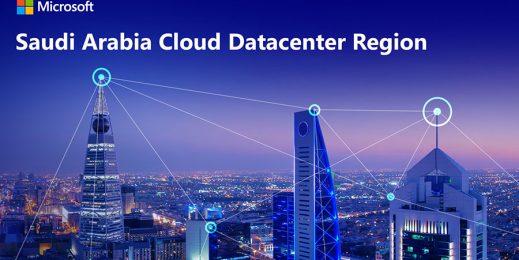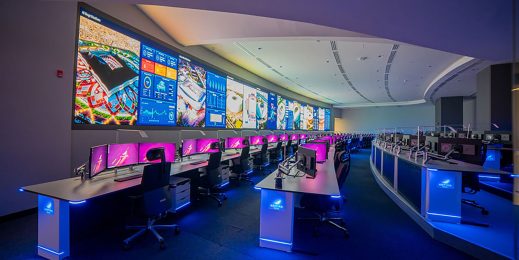
Five quick wins for business leaders looking to advance their sustainability agendas
By Sherif Tawfik, Chief Sustainability Commercial Officer, Microsoft Central, Southeast Europe, Middle East and Africa
Around 20 meters high and constructed on a 91-meter-long platform, the Great Mosque of Djenné in Mali is the most sophisticated example of Sudano-Sahelian architecture in history and the largest mud-brick building in the world. Protecting the ancient Mosque from the country’s ruthless rainy season is a seemingly impossible undertaking and one which requires the entire community to come together every year to help reinforce the mud-based walls during the replastering, or Crépissage as it’s known. And incredibly, these efforts have kept the Mosque standing since it was rebuilt more than a century ago.
In many ways, the sustainability imperative facing today’s business leaders is an even more daunting undertaking than the Crépissage and far more important to get right. So much so that many business leaders in the Middle East are experiencing ‘perfection paralysis’. Sustainability is a top priority for most companies in the region, but believing they still need significant investment to fulfil the requirements of the Paris Agreement, many say they will delay significant action until after 2030.
The reality is that most businesses globally do not have roadmaps in place for achieving net-zero emissions by 2050.
But just as the Malians’ strategy for success relies on incremental efforts, so it’s critical that regional leaders help preserve the planet by focusing on progress rather than perfection.
Digital technology can play a vital role here, not only helping organizations to achieve rapid progress in cutting emissions but also cutting costs at the same time by lowering energy consumption, reducing travel, using resources more efficiently and making smarter decisions informed by data.
Here are five quick wins leaders can focus on to kick their net-zero strategies into gear.
Unify data intelligence to measure sustainability progress
 To progress their sustainability agendas, organizations need to not only set sustainability targets but track them as well. You can’t progress what you can’t measure. The challenge, however, is that many businesses lack the timely, accurate access to the information they need to monitor their sustainability efforts, with fragmented data sitting in siloes across the organization. To circumvent this challenge, industry leaders like the BBC are making use of Microsoft Sustainability Manager to automate the manual processes around consolidating data from multiple different sources, ultimately enabling them to monitor their energy consumption, travel and waste generation. By tracking these factors, the BBC can pinpoint areas where they are using resources inefficiently and develop strategies to reduce their impact on the environment.
To progress their sustainability agendas, organizations need to not only set sustainability targets but track them as well. You can’t progress what you can’t measure. The challenge, however, is that many businesses lack the timely, accurate access to the information they need to monitor their sustainability efforts, with fragmented data sitting in siloes across the organization. To circumvent this challenge, industry leaders like the BBC are making use of Microsoft Sustainability Manager to automate the manual processes around consolidating data from multiple different sources, ultimately enabling them to monitor their energy consumption, travel and waste generation. By tracking these factors, the BBC can pinpoint areas where they are using resources inefficiently and develop strategies to reduce their impact on the environment.
Make IT operations more sustainable in the cloud
Migrating to the cloud can have a dramatic impact on an organization’s carbon footprint. In fact, transitioning workloads to Microsoft Azure can produce up to 98 percent more carbon efficiency and up to 93 percent more energy efficiency than on-premises options.
Organizations such as PGESCO in Egypt are already successfully reducing their energy footprints by migrating their on-premises datacenters to the cloud. By switching away from onsite servers, the engineering firm reduced its need for heating, ventilation and air conditioning, ultimately reducing its environmental impact significantly.
What’s more, the cloud is instrumental in providing organizations with additional insights into the carbon impact of their cloud workloads to help them make more sustainable computing decisions. Azure’s Emissions Impact Dashboard, for example, enables businesses to measure their Microsoft Cloud–based emissions and estimate emissions avoided by using the cloud.
Cut down energy use using smart facilities
The International Energy Agency estimates that 30 percent of global energy is consumed by the operation of buildings. This is where smart facilities can make a massive difference in cutting emissions over the short-term. By automating heating, ventilation, air conditioning and lighting, for example, organizations can typically save as much as 30 to 50 percent on energy use. This also helps companies save on the lifespan costs of a building – two fifths of which are typically spent on energy.
Government organizations in the Middle East are already using the latest digital twin technologies, IoT and AI to reduce energy use. In fact, the Dubai Electricity and Water Authority’s new headquarters, Al Shera’a, will be the largest government net-zero energy building in the world. The total energy used in the building during a year will be equal to or less than the energy produced on-site.
Digitize supply chains to increase efficiencies
Supply chains not only contribute heavily to an organization’s carbon footprint, but also its operating costs. In fact, while supply chains account for as much as 90 percent of a company’s greenhouse gas emissions, they are also responsible for as much as 70 percent of operating costs. Introducing digital technology to the supply chain, can make it more efficient in a matter of weeks.
Mercedes-Benz, for example, has implemented an analytics tool to monitor and reduce its ecological footprint during vehicle production. With the tool, teams can track and forecast carbon emissions, energy and water usage as well as waste management, and roll out best practices across the production network.
Increase remote collaboration to reduce travel
Business travel can contribute as much as 50 percent or more of an organization’s carbon footprint. To cut the time, costs and emissions associated with business travel while driving up productivity, companies should embrace remote collaboration. Indeed, PGESCO’s cloud-enabled shift to remote work has played a role in reducing the company’s carbon footprint with more than 90 percent of project teams having migrated to a virtual environment.
As business leaders in the region look to advance their sustainability mandates, many will ask themselves where to focus first. Are there incremental investments to be made today that will not only accelerate progress on reducing emissions but also quickly deliver outsized return for the business? The answer lies with digitization in key areas across the organization – by fast-tracking their digital transformation, leaders can address longer-term sustainability goals and fuel future growth. Small steps for business ultimately mean giant strides towards a more sustainable future.









![A security team analyses key data from a visual dashboard.]](https://news.microsoft.com/wp-content/uploads/prod/sites/133/2023/04/Security-Sprint_TL_Banner-Image-519x260.jpg)




